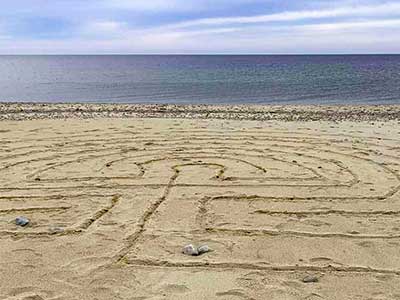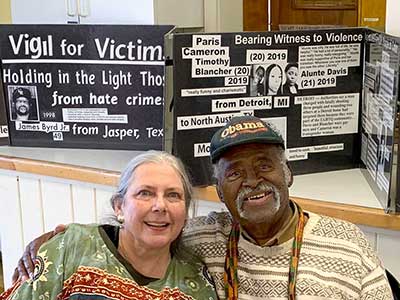by Nanette Kelley | May 2021
Small museums and private institutions that accept federal CARES Act money or other stimulus funds could be forced to relinquish thousands of Indigenous items and ancestral remains now in their collections.
Under the Native American Grave Protection and Repatriation Act of 1990, museums or other institutions that accept federal funding must compile an inventory of Indigenous cultural items and initiate repatriation of the collections and remains to tribes or family members. At least two museums are now facing possible scrutiny – the nonprofit Favell Museum of Native American Artifacts and Contemporary Western Art in Klamath Falls, Oregon, and the End of the Trail Museum, which is connected to the Trees of Mystery gift shop in the redwood forest in Klamath, California.
TAGS: [Assumptions] [2020’s] [Indigenous] [Art & Culture] [Silencing POC] [History] [Politics] [White Supremacy] [White Culture] [Economics] [Systemic Racism] [Advocacy] [Social Justice]
by Sarah Boxer | December 2020
Quick, name one iconic Depression-era portrait each by Dorothea Lange, Walker Evans, and Russell Lee. My guess is that you’d choose Lange’s Migrant Mother, a portrait of Florence Owens Thompson and her children taken in Nipomo, California, in 1936. For Evans, you’d probably pick a 1936 portrait of tight-lipped Allie Mae Burroughs standing before the wall of her family’s cabin in Hale County, Alabama. For Lee, you might draw a blank, but you’d likely recognize his 1937 group portrait Saturday Night in a Saloon, showing four drinkers in Craigville, Minnesota. (It was used in the opening sequence of the TV show Cheers.)
TAGS: [Assumptions] [2020’s] [Silencing POC] [White Culture] [White Privilege] [White Supremacy] [Art & Culture] [History] [Systemic Racism] [White Defensiveness] [Politics] [Denial]
by Maia Niguel Hoskin, Ph.D. | June 2020
Because Whites are the nonracialized majority, they live in an insulated environment of racial protection and comfort, which makes them unable to tolerate racial stress. Whiteness scholar Robin DiAngelo refers to this as White fragility and says this about it: Once White people are confronted with racial stress, it triggers various defensive responses in them, such as anger, guilt, silence, outward displays of emotion, defensiveness, and shutting down. Some argue that color-blindness has been used as a way for Whites to accommodate their racial fragility and ease their guilt. Feelings of shame and defensiveness associated with racial injustice can be minimized if its existence is denied. Like color-blindness, performative activism is manipulative and maintains systems of racial privilege by Whites centering their desire to seek comfort over addressing racial injustice.
TAGS: [Assumptions] [2020’s] [Myths] [White Fragility/Tears] [“All Lives Matter”] [White Defensiveness] [White Blindness] [White Supremacy] [Social Justice] [Policing] [Black Lives Matter] [History] [Colorblindness] [Tips-Dos/Don’ts] [Anti-Racism]
by Briget Quinn | August 2020
It’s an under-known fact that the “revolutionary” concept of a democratic union of discrete states did not spring fully formed from the Enlightenment pens of the Founding Fathers, like sage Athena from the head of Zeus. No, the idea of “united states” sprang from the Haudenosaunee, collective name for six tribes that comprise the so-called (mostly by non-Natives) Iroquois Confederacy: the Seneca, Oneida, Mohawk, Onondaga, Cayuga, and Tuscarora nations. Should you doubt this, check out Congressional Resolution 331, adopted in 1988 by the 100th Congress of the United States, which says as much. It’s worth noting that the Haudenosaunee Confederacy still thrives today, likely the world’s oldest participatory democracy.
TAGS: [Assumptions] [2020’s] [Collective Action] [History] [Indigenous] [Myths] [Politics] [Silencing POC] [Systemic Racism] [White Blindness] [White Culture] [White Fragility/Tears] [White Privilege] [White Supremacy]
by Michael Elsen-Rooney | March 2021
A white Long Island Catholic school headmaster forced a Black 11-year-old student to kneel down and apologize to a teacher — calling it the “African way” to say sorry, the Daily News has learned. Hempstead mom Trisha Paul says it was disturbing enough to learn about the punishment of her sixth-grade son at the hands of St. Martin de Porres Marianist school headmaster John Holian. But she was even more shocked when Holian, who is white, told Paul, who is Haitian-American, he’d learned the approach from a Nigerian father who said it was an “African way” of apologizing.
TAGS: [Assumptions] [2020’s] [Systemic Racism] [Black Lives Matter] [Teachers] [White Supremacy] [White Privilege] [White Culture] [White Blindness] [White Defensiveness] [Accountability]
by Emily S. Renschler and Janet Monge | Month Unknown 2008
Although few visitors to the Museum would know this, the Samuel George Morton cranial collection at the University of Pennsylvania Museum of Archaeology and Anthropology is one of the most famous collections of human skulls in the entire world. Its presence in Philadelphia is the result of the collecting activities of Samuel George Morton (1799–1851), a Philadelphian who actively participated in the vibrant medical and scientific community that spanned the Atlantic Ocean in the early 19th century.
TAGS: [Assumptions] [2020’s] [Art & Culture] [History] [Slavery] [Indigenous] [Black Lives Matter] [Latino/a] [Myths] [White Supremacy] [White Privilege] [White Culture] [Systemic Racism]

















